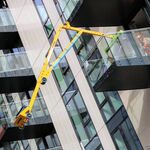Both true.
Clearly there are non-enforcement actions that are essential elements of combating this housing crisis, including, but not limited to the provision of more deeply affordable housing, significantly higher social assistance/disability payments, easier to access, higher quality addiction treatment (no waitlist), and a higher minimum wage, amongst other things.
Yet, there is also a need to tell people in crisis, that remaining in crisis is not an option. That if they are suffering mental illness, which impairs their ability to function in any way in society, particularly to the point of self-harm or harm of others that treatment is compulsory. (this she be pursued with caution, and guardrails to preclude abuse).
Equally the above applies to addiction where it has left someone unable to maintain housing or employment/education etc.
Finally, for those for whom the above are not an issue, there is an affirmative obligation to accept help and alternative accommodation when offered. *
* I'll be the first to agree that our shelter system is dysfunctional to put it mildly and that even when space is available it is often insufficiently private, insufficiently safe, insufficiently hygienic all while managing to be very rules-bound, at the same time, which is a rather unfortunate feat.
There is no question we must do better, much better. Yet, there is some element of having to deal with the world as it is; and not was we wish it was. If you're declining shelter, and being as inconspicuous as possible in your crisis, causing as little inconvenience or harm to others as might be imaginable, perhaps one could argue for looking the other way with not so benign neglect. But where one's crisis is clearly adversely impacting the lives of others, some measure of intervention, however uncomfortable may be required.




